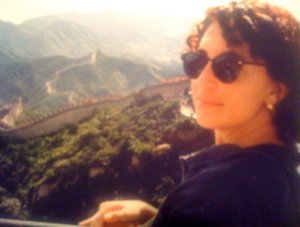According to the Tibetans, today is Buddha’s birthday. A prince with everything in the world, he set off on a quest to discover the truth of life. I’m remembering a mindfulness adventure I had this week, fifteen years ago:
In Borneo, I felt bored and restless at a luxe, manicured Shangri-La resort favored by fugitive rogue traders. Wandering past the watersports shack I asked to go to an outlying island in the South China Sea. No notice to the people I was traveling with, no drinking water, food or cellphone.
The white-uniformed sailor dropped me at the random spot I’d picked from his laminated map. A decrepit picnic bench sagged in the shade of a steep cliff carpeted in greenery, where faceless monkeys screeched. No facilities, no stand selling lunch, no people. Just plastic flotsam and slithery tracks lacing the sand. The hotel boat fishtailed away.
Did they write down where they left me? Lawsuit waiting to happen. Already thirsty. Wait, six-inch wide tracks. From what scaly beasts?
No way I’d approach the trees where those squiggly trails led. I was frying in the tropical sun. Unnerved to cool off in the translucent green water. What if I suddenly ‘had trouble’ swimming, or a shark came? Maybe I could flag down a passing boat to take me back. But these were pirate-infested waters.
Silly overreaching hotel guest, I was going to die on this wild island.
I picked up a 5-liter water jug and started filling it with cones and olive shells glinting among seaweed and garbage. Good stuff. My best vacations were spent shell-collecting in the Gulf of Mexico…Sanibel Island in Florida.
Heavenly new finds here. A true Shangri-La paradise. Zebra-striped scallops. Glossy limpets. Spiky orange coral.
That day as I ringed the tiny island — is that a chickpea cowrie? – I turned the corner on my own nature’s bitter edge.
On this birthday week of Buddha can you name a mindfulness experience you’ve had?
This blog has moved. Comment here.





 2010 Capital of Culture monthly feature of best Istanbul links
2010 Capital of Culture monthly feature of best Istanbul links